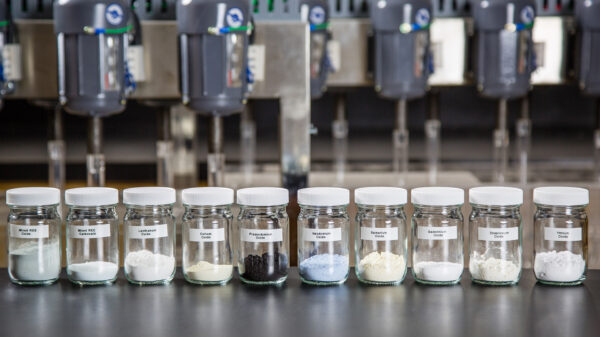Analysts project that copper consumption in the United States and India will surge over the next decade, even as China’s dominance in the market begins to ease.
The forecasts, released in October 2025 by Panmure Liberum, Benchmark Mineral Intelligence, and CRU Group, reflect a shifting global copper market after more than 25 years of Chinese-led growth. Analysts say China’s rapid industrial expansion is slowing, allowing other regions to drive future demand and influence prices.
China’s industrial and infrastructure boom has driven copper prices from roughly USD$1,500 to above USD$10,000 a metric ton. However, as the country’s growth slows, new demand patterns are emerging that could reshape the global copper market.
China will likely remain the largest consumer of copper into the 2030s. However, analysts expect a shift in the forces driving both demand and prices.
Regional infrastructure needs, manufacturing trends, and global policy changes are beginning to diversify the market’s direction. Producers, traders, and investors will need to adapt to an environment no longer dictated almost entirely by China’s building cycle.
Tom Price, an analyst at Panmure Liberum, said China’s pace of copper use and stockpiling is tapering off as the market reverts to traditional demand sources, such as equipment replacement and modernization projects in other regions. In other words, copper’s next phase of growth will depend more on the rest of the world catching up than on China building new infrastructure.
Government policies in the U.S. and Europe that promote domestic manufacturing are also contributing to this shift.
Read more: NevGold’s latest Nevada drill results show exceptional gold mineralization
Read more: NevGold closes its Nutmeg Mountain acquisition with Goldmining for $3 million
U.S copper demand could climb 50% between 2026-2031
China’s massive export engine is expected to cool as countries impose higher tariffs and adopt industrial policies aimed at reshoring production. As a result, China’s need for refined copper, currently around 15 million tons a year, could weaken.
Meanwhile, expanding energy grids and data centres in North America and India are creating a new wave of copper-intensive demand.
Price forecasts Chinese copper consumption will drop six per cent between 2026 and 2031 during transition to slower growth. He expects China’s share of global primary copper use to fall from 57 per cent in 2026 to 52 per cent in 2031. Furthermore, this comes even though overall consumption will rise to 27 million tons.
By contrast, U.S. copper demand could climb nearly 50 per cent over the same period to reach 2.2 million tons. Meanwhile, while India’s demand is projected to surpass one million tons, a gain of more than 30 per cent.
Trade tensions are further accelerating this shift.
Analysts expect President Trump to impose 50 per cent tariffs on Chinese copper pipes and wiring to encourage local production. The move could also limit China’s export markets.
According to Trade Data Monitor, the U.S. ranked as China’s fourth-largest destination for copper tubes and pipes last year. American imports of those products reached 14.4 million tons in 2024, and nearly eight million tons in the first seven months of 2025. Those figures highlight the potential impact of new tariffs on Chinese manufacturers.
Read more: NevGold delivers major growth at Idaho gold project
Read more: Antimony recovery results from NevGold’s Limo Butte project exceed expectations
Copper demand centres on modernization
Duncan Hobbs, research director at Concord Resources, noted that China’s export driven manufacturing sector will likely slow as more Western countries push back against dependence on Chinese goods. This includes copper wiring and components used in power grids, which are in focus as global infrastructure renewal efforts.
Approximately 70 per cent of power transmission lines were over 25 years old in the last Department of Energy review.
That aging infrastructure underscores the need for upgrades and replacements, which will boost copper demand over the next decade. In India, grid expansion is moving at a faster pace as the government aims for 500 gigawatts of non-fossil fuel capacity by 2030.
Across Asia excluding China, consultancy Benchmark Mineral Intelligence (BMI) forecasts copper demand to increase 25 per cent between 2025 and 2030, reaching more than 9.2 million tons. For sectors such as electric infrastructure, data centres, and telecoms, BMI expects copper consumption to grow 35 per cent to about 2.2 million tons.
By comparison, BMI’s estimates for China’s growth in these areas are only 4 per cent and 11 per cent, respectively.
In the West, the copper demand story centres on modernization rather than new construction. Analysts say upgrading old grids and industrial systems will require steady but less copper-intensive work compared to China’s earlier infrastructure buildout.
Robert Edwards, principal analyst at metals consultancy CRU, said he has long anticipated a decline in China’s market dominance, though it was delayed by Beijing’s heavy investment in electric vehicles, renewable energy, and power distribution.
Read more: NevGold Corp’s limousine Butte drill program targets first Gold-Antimony resource estimate
Read more: NevGold targets U.S. critical mineral supply chain with new antimony-gold find
Copper will be central to industrial progress
CRU now expects China’s share of global mined and recycled copper consumption to slip from 59 per cent in 2025 to 57 per cent of an estimated 31.36 million tons in 2030. Edwards added that copper’s demand growth potential in China is increasingly limited. Conversely, expansion opportunities elsewhere are widening.
The next decade will likely see copper prices influenced by a wider range of forces than at any point in the past generation. As nations modernize power networks, electrify transport, and build digital infrastructure, copper will remain central to industrial progress. Yet the centre of gravity is shifting away from China, signalling the rise of a globally distributed market.
This issue extends past copper. It’s part of a longer, protracted effort by the United States to reduce its dependence on China for critical minerals. This includes strategic investments, policy initiatives, and support for domestic mining projects.
In October 2025, the U.S. government announced a USD$35.6 million investment to acquire a 10 per cent stake in Trilogy Metals (TSE: TMQ) (NYSE: TMQ).
The investment also supports the Ambler Road infrastructure project in Alaska. Furthermore, this will facilitate access to mineral-rich areas, including copper and germanium, benefiting companies like Trilogy.
The U.S. government is also supporting domestic mining projects to boost production of critical minerals. In June 2025, the Federal Permitting Improvement Steering Council announced the acceptance of three new critical mineral mining projects to receive the benefits of FAST-41 transparency status. This initiative aims to expedite the permitting process for critical infrastructure projects, ensuring a level of accountability in environmental review.
Read more: NevGold Expands Gold-Antimony Potential at Limousine Butte in Nevada
Read more: GoldMining chooses to retain its NevGold shares for next 18 months
NevGold shifts focus to include antimony
Furthermore, the United States and Australia have announced a joint investment of USD$2 billion in critical minerals projects to reduce reliance on China and strengthen supply chains. As part of the agreement, each country will invest at least USD$1 billion over six months, set a price floor for critical minerals, and support several Australian mining firms.
The partnership includes advancing a plan by Alcoa to build a gallium plant in Western Australia. The company expects it to provide up to 10 per cent of the global gallium supply.
NevGold Corp (CVE: NAU) (OTCMKTS: NAUFF) (FRA: 5E50) is one example of a company shifting its focus to include antimony.
The company has discovered high-grade oxide antimony at its Limousine Butte Project in Nevada. In October 2025, NevGold announced the discovery of the “Bullet Zone,” which returned grades up to 8.9 per cent antimony. The project is an advanced-stage gold and antimony exploration asset located in White Pine County, 70 km north-northwest of Ely.
NevGold’s growing antimony footprint provides investors exposure to a strategic metal at a time when governments are actively incentivizing production.
.
NevGold Corp is a sponsor of Mugglehead news coverage
.














